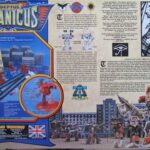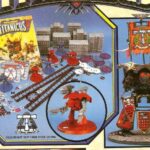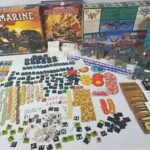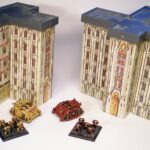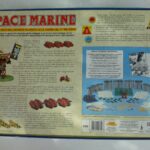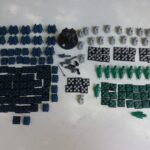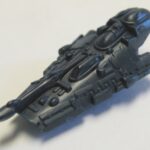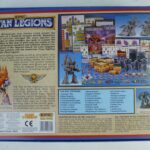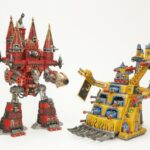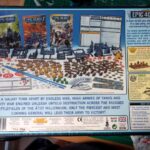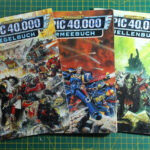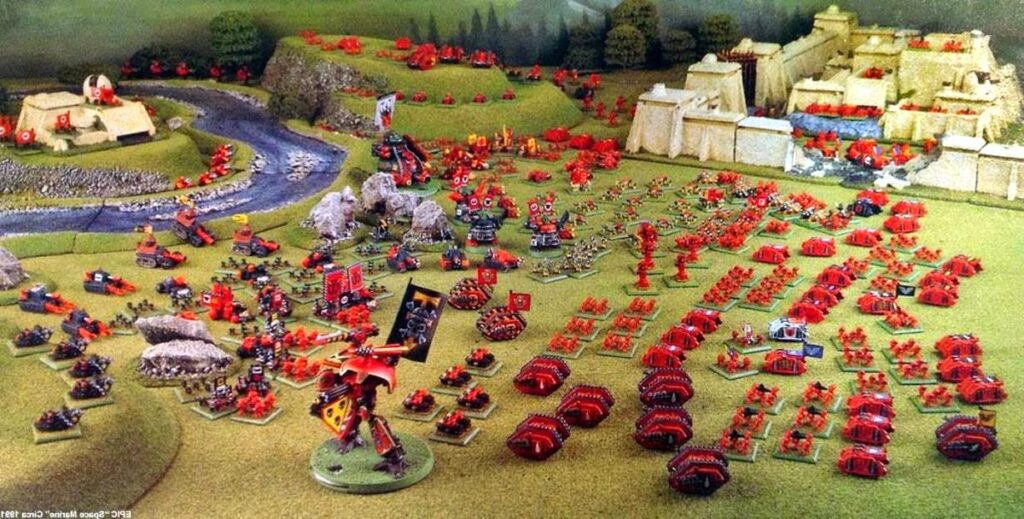
Part 3 : The history of Epic Space Marine.
The major difference between Epic and other Games Workshop games is that instead of a player moving and firing all of his forces at once, players take turns moving one or two formations at a time using a variety of different “orders”, giving the feeling of a battlefield developing in real-time, and also resulting in a game that is more tactically complex than Warhammer 40,000.
The comparatively smaller size of the miniatures also allows players to use many of the larger vehicles and creatures of the Warhammer 40,000 universe, such as Titans and Super-Heavy Tanks, even in small games, whilst also allowing longer ranged weapons such as artillery to be more realistically portrayed.

Also of note is the introduction of blast markers: a simple system representing each formations degree of morale and suppression under fire which, again, adds another dimension of realism over some wargames.
Epic’s rule system incorporates Aircraft as well as ground units, and allows players to utilise many aircraft at once.
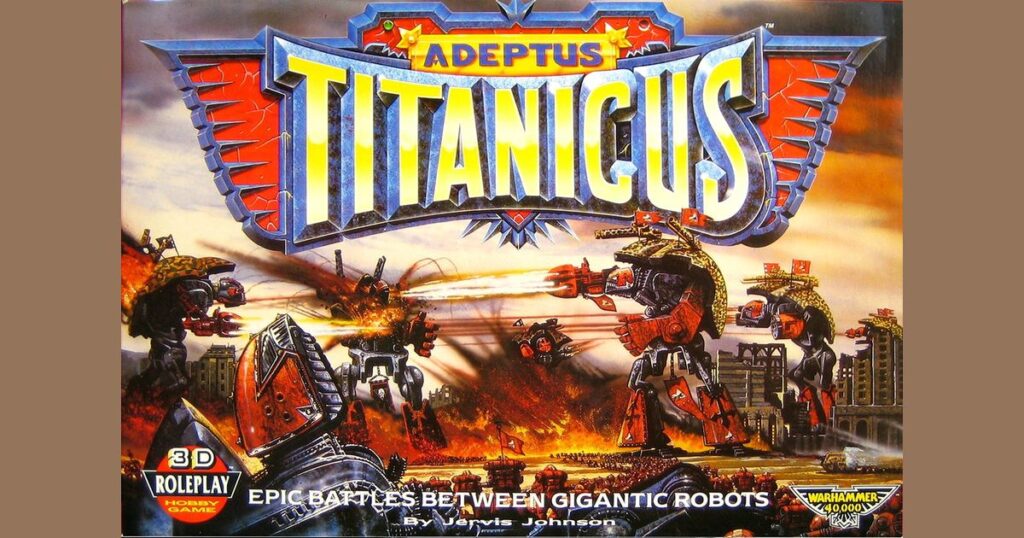
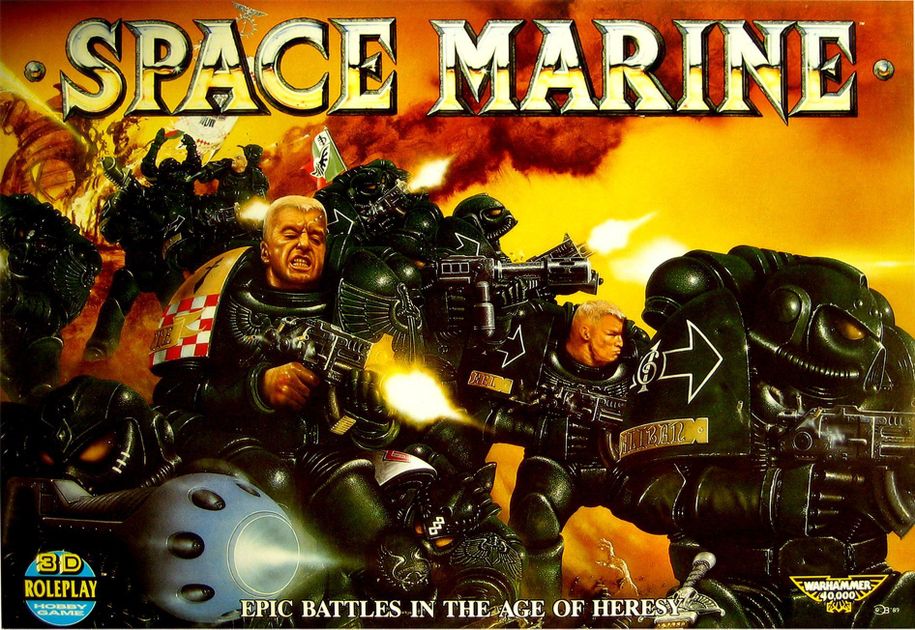
1st edition
The rules for the first edition of Epic came in two parts.
The Adeptus Titanicus (1988) rules and miniatures set, which dealt with battles between opposing Imperial Titans, was published first. Rules for infantry and vehicles (the troops and vehicles of the Heresy era Space Marines) followed in White Dwarf 109. At the time of its release Adeptus Titanicus was GW’s way to counter the increasing popularity of FASA’s Battletech, a tabletop game based around mecha warfare (which eventually expanded to infantry and vehicular combat, and even to an aerospace fighters supplement). GW was able to benefit from its savviness in the miniatures business, and integrating “Titanicus” in the popular WH40K universe proved a winning move.
Space Marine, another miniatures and rules set (for two opposing Space Marine armies), followed after (in 1989). The two could be played as individual games or as a combined game.
Where Adeptus Titanicus included six plastic Titan models with swappable weapons and Styrofoam buildings, Space Marine included folded card buildings with styrene roofs alongside its sprues of infantry and vehicles.
Numerous articles supporting the Adeptus Titanicus/Space Marine game were released in White Dwarf magazine including a variety of optional rules, army lists and organizational charts.
As months passed by, Adeptus Titanicus more or less stagnated apart from the introduction of smaller war machines called “Knights” (both Imperial and Exodite Eldar ones) and, later, the appearance of the mutated Chaos Titans. Space Marine, however, prospered with the release of a new army list system heavily based in semi-realistic orders of battle with support attachment, multi-tiered command structure and regimental/battalion levels.
2nd edition
The second edition of Epic was again released as two compatible but stand-alone games, Space Marine which consisted of the core rules, and Titan Legions (1994) which contained enhanced rules for Titans.
Various supplements were produced, including Armies of the Imperium (1991), which gave rules for the Space Marines and Imperial Guard, Renegades (1992) which had rules for the forces of Chaos and the Eldar, Ork and Squat Warlords (1992), which featured the Orks and Squats, Hive War (1995), which featured the Tyranids and White Dwarf Presents Space Marine Battles (1993) which was mostly reprints of Epic-related articles from White Dwarf.
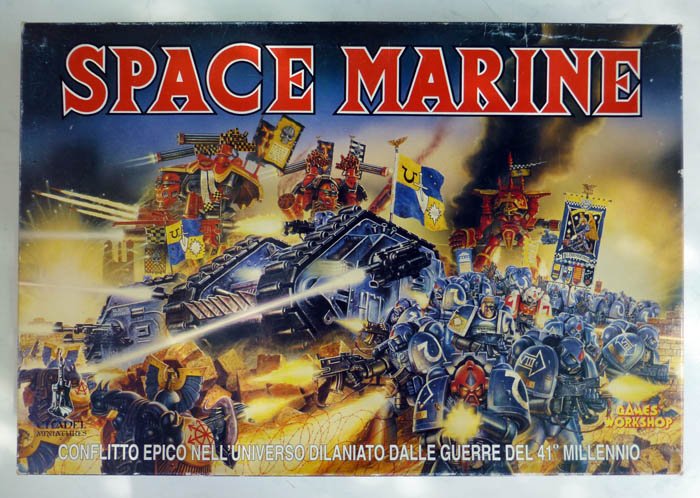
The Space Marine boxed game included three armies; the Space Marines (with their Land Raiders MkI and Rhinos), Orks (with their Battlewagons), and Eldar (with their Falcon Grav-Tanks). The Marines were depicted the same as their Warhammer 40,000 Second Edition counterparts. There was also the plastic Imperial Warlord Titan MkI (nicknamed the “Beetle” due to its curves, while later Warlord Titans have a more angular design) with interchangeable weapons.
Titan Legions was notable for introducing the Imperial Emperor-class Imperator Titan and the Ork Mega-Gargants, all of which were immensely powerful and could constitute small armies in their own right. These ‘Mega’ class vehicles could only be used in large games and none of the other races had such an equivalent. They were gradually phased out in later editions, though the current 4th edition has optional rules for them. Besides one Imperator and two Mega-Gargants, the boxed set also contained ten Imperial Knights and twelve Ork Battlewagons.
The second edition of Epic was vastly popular and supported a huge range of miniatures.
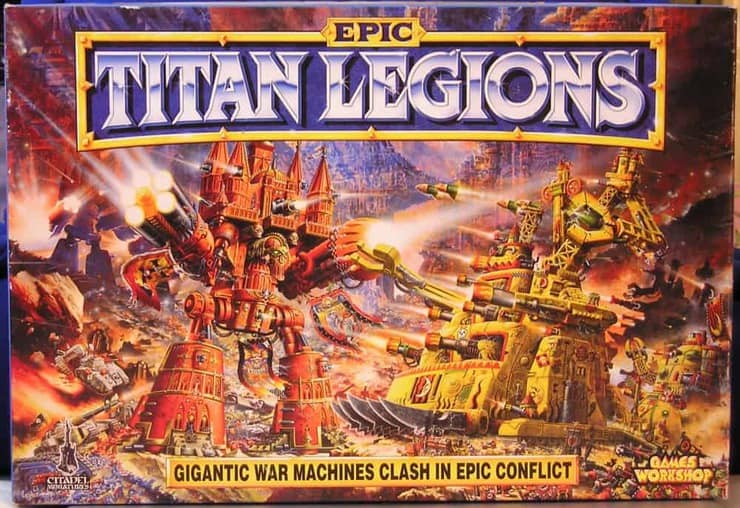
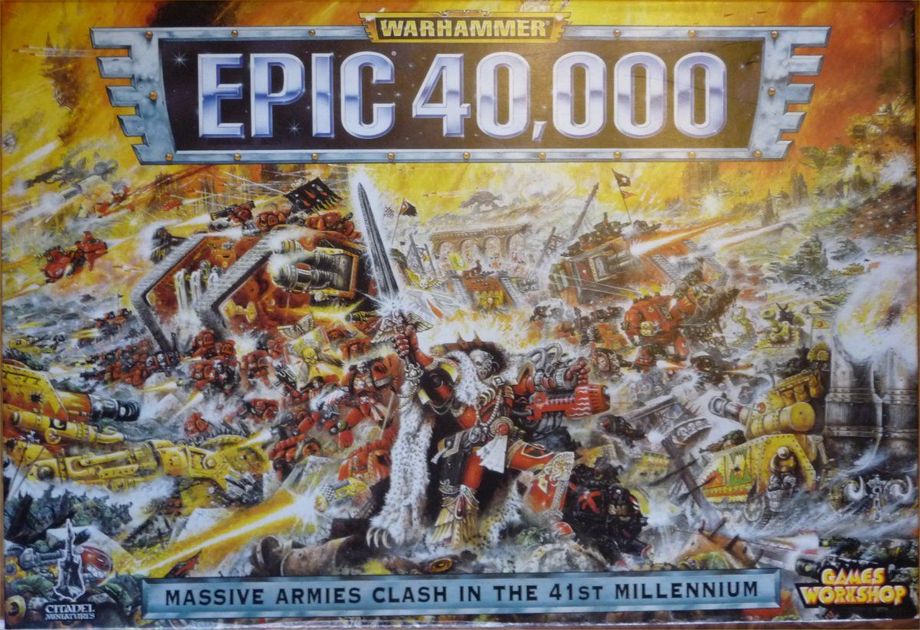
3rd edition
The third edition of Epic was released as Epic 40,000 in 1997. In contrast to previous editions, this was released as just one set of rules. The game had a very short period of support (six months) from the company before it was withdrawn. Epic 40,000 never enjoyed the popularity of the previous two editions, and after support was reduced many of the miniatures planned for Epic 40,000 were never released.
Though it was a failure for the company, designers Jervis Johnson and Andy Chambers still maintain that it was the best set of rules they ever conceived, as it was the game that most rewarded good tactics over luck and special abilities. This was achieved by streamlining the game mechanics and abstracting many of the areas which the previous editions had dealt with in specific detail.
As noted above, Epic became more streamlined during the third edition, in order to fit entirely within three (relatively thin) A5 rulebooks (the Rulebook, the Armies Book and the Battles Book). Army and Company Cards were eliminated and detachments were picked from largely unrestricted detachment rosters of a very general type (Imperial Guard Infantry, Space Marine Armour and so on, in the case of the Imperial army list). Titans and Super-Heavies (now collectively War Engines) were simplified to the point that their rules were contained entirely within six pages of the new small-format rulebook.
Collectively, this increased the speed of gameplay significantly, which was Games Workshop’s stated aim, but it received a mixed reaction, in part because it was considered too abstract and no longer accounted for unique features of certain units.
The boxed set contained the armies of Space Marines (including Rhinos, Land Raiders MkII, and Whirlwinds) and Orks (with their Battlewagons and Stompas). The cover art showed a Blood Angels Space Marine advance pushing away the Orks.
Although miniatures from early editions were still playable and interchangeable, it was at this time they changed the basic base/stand size for infantry from square 20×20 to a longer version 10×40 which although they could be played or fielded in battle together it changed a lot for those who already had square based armies.
Coming soon……….Part 4: The history of Epic Space Marine, part 2

